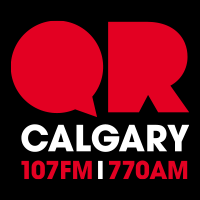The returning officer for the City of Calgary has endorsed the use of electronic tabulators for future elections.

Laura Kennedy said the quick turnaround for results from the Nov. 13 Olympic plebiscite — about 95 minutes after polls closed — was reason enough to adopt the use of the machines.
“Right now, I’m quite pleased with how it worked. The comments we are getting from residents that used it is it was great and it was nice to see their vote was accepted.”
Kennedy said there were no issues with the tabulators during the plebiscite and she’ll push to have council use the machines for the next municipal elections.
Kennedy said the machines allowed for lines of voters to keep moving through the process, even as wait times crept up past half an hour.
“We started seeing numbers were going up to 12 minutes, eight minutes,” Kennedy said. “The highest, I believe, was 40 minutes. But even at 40 minutes, we heard from the voters that the line kept on moving and they knew they were going to go through.”
- Province says only Canadians can vote in civic elections, despite Calgary city council motion
- Trans Mountain pipeline tolling dispute could stretch into mid-2025: Cenovus
- Man faces murder charge after ‘fatal domestic assault’ in northeast Calgary: police
- Fire at Calgary’s Ogden Block ‘really upsetting’ to group trying to save heritage building
Rather than purchase vote-tabulating machines, Kennedy will be recommending to city council that they lease them from a third-party provider, allowing for the most up-to-date tabulating technology.
“The technology changes. The firmware changes. The software gets updated. I don’t want to hold those machines in a warehouse from elections to elections and then try to catch up on the software.”
Kennedy also said it could be possible to not have to transport the tabulators to a central tallying location, as the city did for the Olympic plebiscite.
“There’s other generations of these tabulators. You can have the information generated right from the voting station into the central location so there is no transport needed to get the cards read. We’ll look at that. There’s a lot of different options to look at how we’ll do it.
“This was a good reliable way of doing it and it was timely.”
With files from Aurelio Perri








Comments